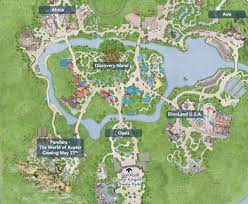Welcome to Earth and its vast and varied landscape! Animal Kingdom Maps is an exploration of the habitats, homes, and territories of the amazing animal kingdom. We’ll be taking a look at the diverse species that inhabit different parts of the world and exploring the unique environment they have adapted to.
From the warm and humid rainforests of the tropics to the icy tundras of the Arctic, the animal kingdom map reveals how different animals occupy different parts of the globe. With a detailed look at the animal kingdom, we’ll reveal fascinating facts about the behavior, diet, evolution, and conservation of animals from all around the world.
You’ll be taken on a journey through the planet’s many habitats, uncovering the many mysteries of the animal kingdom. Get ready to explore the amazing animal kingdom and the incredible habitats these animals call home!
1. Dividing Animals into Vertebrates and Invertebrates
The Animal Kingdom Map divides animals into two major classes: Vertebrates and Invertebrates. Vertebrates are animals with a backbone and a segmented spinal column. This group includes mammals, birds, reptiles, amphibians, and fish. Invertebrates are animals without a backbone.
This group includes arthropods (insects, spiders, crustaceans, and other arthropods), mollusks (clams, snails, and octopuses), worms, jellyfish, and sponges. The Animal Kingdom Map provides an essential foundation for understanding the complex animal world.
2. Identification of Mammals, Birds, Reptiles, Fish, Amphibians, and Insects
The animal kingdom is a vast and diverse world. It is divided into two main groups: vertebrates and invertebrates. Vertebrates, such as mammals, birds, reptiles, fish, and amphibians, all have a backbone and internal skeleton. Invertebrates, such as insects, arachnids, and crustaceans, lack a backbone and internal skeleton. Within these two main groups, each species is identified and classified according to its characteristics.
Mammals possess body hair, nurse their young with milk, and have a four-chambered heart. Birds have feathers, wings, and a four-chambered heart. Reptiles have scaly skin, lay eggs, and have a three-chambered heart. Fish have gills and fins, and a two-chambered heart. Amphibians usually have moist, smooth skin, and three-chambered hearts. Insects have a hard exoskeleton, three body parts, and antennae. By understanding the differences between each species, we can better appreciate the beauty of the animal kingdom.
3. Classification of Mammals, Birds, Reptiles, Fish, Amphibians, and Insects
The Animal Kingdom is a vast and diverse world, with many different species and groups of animals. In this article, we will discuss the classification of Mammals, Birds, Reptiles, Fish, Amphibians, and Insects.
Mammals are warm-blooded animals that are characterized by the presence of mammary glands, hair, and three middle ear bones. There are over 4,200 species of mammals, ranging from the smallest of the shrews to the largest of the whales.
Birds are classified by their feathers, wings, and beaks. There are over 10,000 species of birds, and they are distinguished by their ability to fly.
Reptiles are cold-blooded animals that are characterized by their scaly skin, and they usually lay eggs. There are over 10,000 species of reptiles, including snakes, lizards, turtles, and crocodiles.
Fish are characterized by their gills, fins, and scales. There are over 28,000 species of fish, and they are found in both saltwater and freshwater habitats.
4. Anatomy of Animals
The fourth section of the Animal Kingdom map is Anatomy of Animals. This section provides a detailed overview of the anatomical systems of various animals, as well as their physiological functions. Here, you’ll learn about everything from the skeletal structure of mammals to the digestive system of birds. This is an important section for anyone wanting to understand how animals are built and how they function. You’ll also learn about how animal behavior is related to the body’s anatomy. This section of the Animal Kingdom map is a great resource for anyone interested in learning more about the animals around us.

5. Types of Habitats Animals Live In
Animals are found living in various habitats around the world. These habitats can range from deserts to oceans, and from mountains to rainforests. A habitat is not just a place for the animal to live, it is a place for the animal to find food, shelter, and resources for survival. Here are five types of habitats animals live in: deserts, wetlands, grasslands, forests, and aquatic habitats. Deserts are extremely dry and hot, and are home to animals like lizards, snakes, and small rodents.
Wetlands include areas like marshes, swamps, and bogs, and are home to animals like frogs, turtles, and marsh birds. Grasslands have tall grasses and other plants, and are home to animals such as antelope and prairie dogs. Forests are made up of tall trees and other vegetation, and are home to animals like bears, wolves, and deer. Aquatic habitats include oceans, rivers, and lakes, and are home to animals like dolphins, whales, and fish.
Conclusion
In conclusion, the animal kingdom map provides a great overview of the animal kingdom that allows anyone to easily identify the main groups of animals. It is a great way to explore the different branches of the animal kingdom, from the smallest invertebrates to the largest mammals. This map can also be a great way to teach children about the different creatures that live on our planet.





